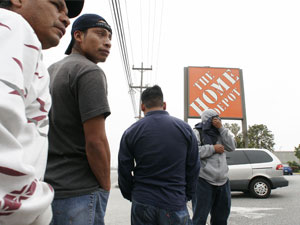Of course, in California, some of these highway investments are going to rural areas such as a bridge in Mendocino County, rather all going to choked urban areas in desperate need (In full disclosure, millions are also going to the 710). And the investment in small-town, McCain America brings me to the second part of this week's blogpost...micropolises.

A micropolis is, according to C. Kenneth Orski, a area neither suburban nor the rural, often centering around a city of around 10,000, and it's the only portion of my key stakeholder segment of my policy presentation not yet covered in this blog. Believe it, I actually learned about this on AIMZones...proving that they are actually useful for something more than celebrity dish. Since metropolitan areas are usually defined by counties, defined micropolises appear in places with small counties, namely the South and Midwest, though in reality micropolises dot the entire country (for example, Parlier, CA, might qualify as a micropolis, but as it's in Fresno County, it's automatically-and unfairly-grouped into the Fresno Metro Area just as Needles is into the San Bernardino). As I stated in the presentation, both micropolises and metropolises will benefit from the stimulus package. Micropolises will benefit from the money that is being sunk into rural roads and rural broadband, and perhaps some micropolises will one day become metropolises, as Visalia did.

By the way, I reopened most of my Purple Backpack Polls--they're open until the end of the month. From the Occidental intramural basketball tournament, I'm the Ferdey coach for the Purple Backpack Politics Blog.

















 Yeah. And that’s today’s blogspot. By the way, if you want to want to read more about the myth of Prometheus,
Yeah. And that’s today’s blogspot. By the way, if you want to want to read more about the myth of Prometheus, 










